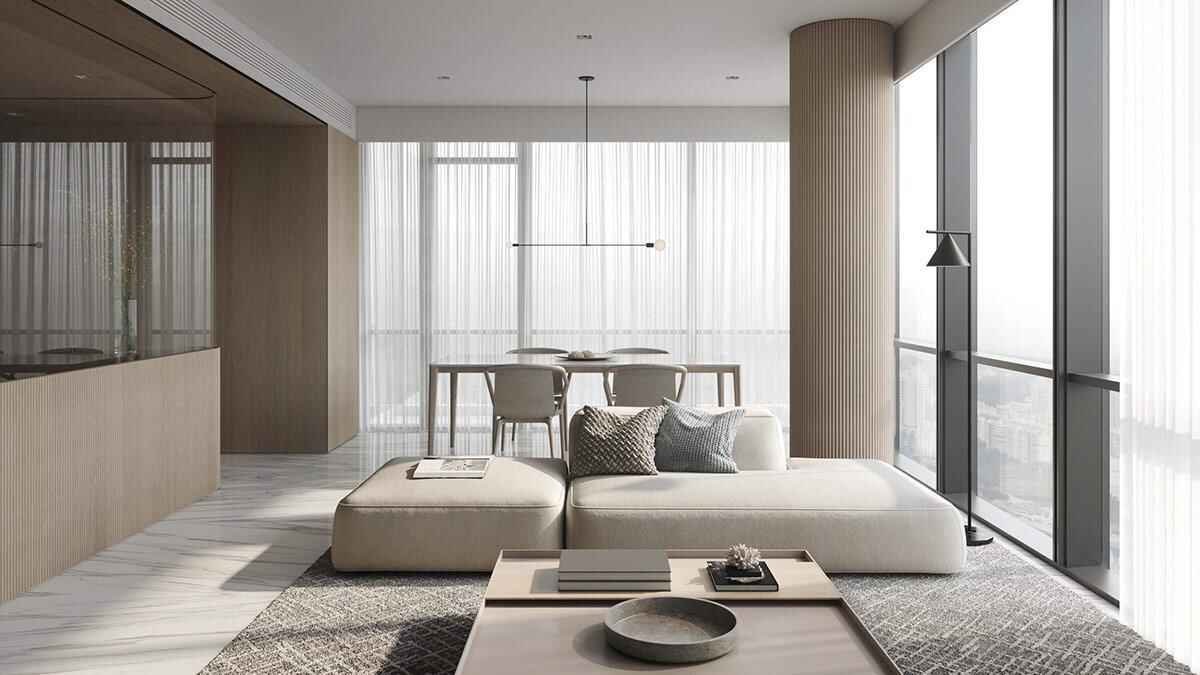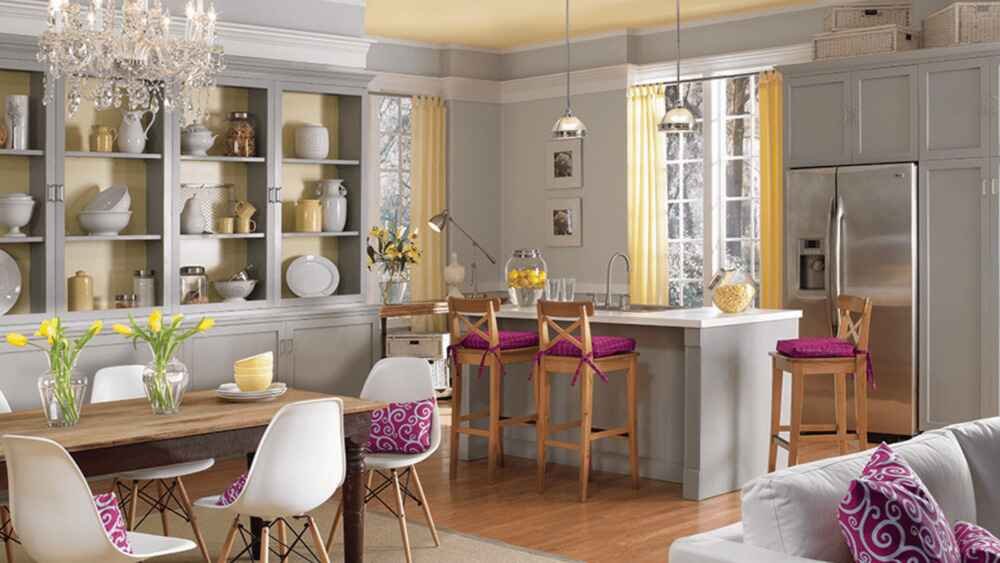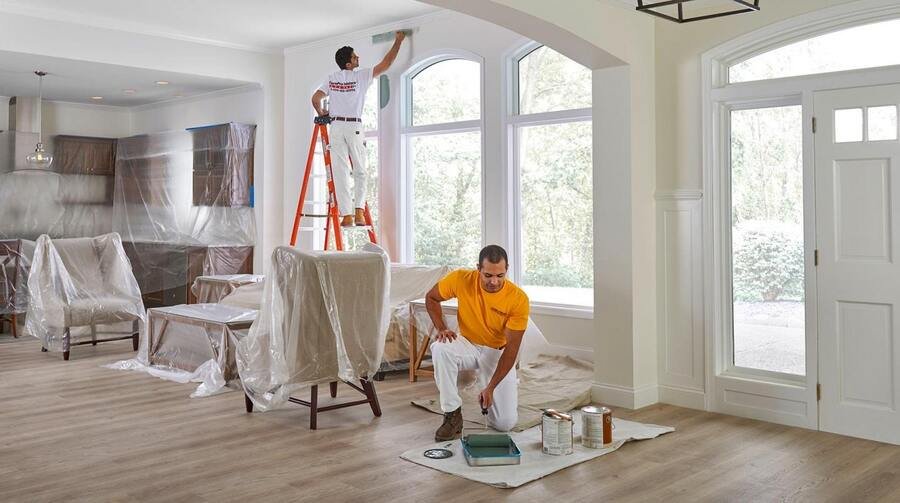It’s not a secret that colors can influence our decisions, evoke certain emotions, and set the mood. So, you must be really careful when it comes to selecting a color for your home. In today’s post, we’ll take a look at the process and some basic points to consider when planning the color palette of your project or your own home.
Consider Purpose and Color
Before choosing a certain color, spend some time thinking about the purpose of the room you want to spruce up with splashes of new color and this actual color meaning. It’s not a secret that different colors influence mood and overall well being differently by communicating diverse feelings such as excitement, relaxation, serenity, mystery, passion, and so on. Colors can transform the space in multiple ways.
They can make your home look larger, warmer, or cozier. The wisely chosen color palette can illuminate or even energize some static areas. Therefore, colors remain those universal tools that are extensively used for creating a specific atmosphere and vibes in their interiors. So, it’s very important that you answer some important questions about the functionality of the space before getting down to painting your walls.
- What is the primary function of your space?
- What mood do you want to create in that space?
- Which colors, do you think, might help you achieve this mood?
The answers to these and other similar questions can help you identify the functions of your space, know how you want to feel inside it, and make the right decision.
Select Neutral Colors

In general, the color palette you choose for your interior is made up of neutral colors and accent colors. A great way to start planning your palette is by selecting neutrals, which can serve as a universal backdrop for virtually any space and interior. The chromatic content is low in neutral colors. So, they won’t look domineering or overwhelming. Even if you wish to stay in a rented home or invest in a rent to own homes, it’s very unlikely that you’ll feel a sudden urge to repaint your walls in a couple of months.
Neutrals act as a perfect canvas to showcase various décor and design elements. Bright accents in furniture, flooring, and molding won’t appear too ostentatious if featured against some calm, neutral backdrop. So, with neutral walls your design opportunities can be truly endless. And to further expand them, you can also utilize some designer tools created to make an interior designer’s life easier. There’s also a cool photo editing tool that might help a beginner interior decorator. Get it here!
When selecting neutral colors, figure out how warm you want them to be. It would be a wise decision to opt for colors like peachy, crème brulee, or caramel if you want your space to look and feel warmer and add a homey vibe to it. If you go for white dove, beige, white, or marilyn’s dress, you’ll be able to lend some cold chic or accentuate your room’s contemporary feel.
One important thing you should be aware of is that selecting warm or cold neutrals can be a bit tricky at times. Experts note that most people might find it difficult to identify the undertone of colors. So, not to break your space’s design, you will want to test your colors prior to applying them on the wall.
Select Accent Colors

Accent colors are essential to provide contrast and offset important elements of your interior. Having your neutral colors selected will make it easier to pick desired accent colors, which, contrary to popular belief, don’t need to be vibrant or super juicy. The only prerequisite is that they contrast with the previously selected neutral palette.
For example, in clutter-free minimalist interior design styles like Scandinavian, you can use light neutral colors as a base and then opt for black or dark gray as an accent. Although this is a monochrome palette, the inherent contrast is so high that it fully accentuates some particular detail in your space.
On the other hand, if you seek to add color and vibrant notes to your home, you can experiment with bolder, brighter colors. Just make sure that your preferred palette is in alignment with your room’s type, functions, and overall design style. So, if you’re looking to decorate your kid’s playroom, you can safely go for orange, emerald green, yellow, red, or any other vibrant color conducive to creativity and having fun.
Also Read: Why You Should Use Low VOC Paint for Interior?
When choosing more than one tone as an accent color, you should know how to properly combine it. Otherwise, your room might risk ending up feeling cluttered, untidy, or insipid. Professional designers utilize the color wheel technique to make sure the colors they choose are compatible and congruent with the overall design conception.
Even if you’re new to interior design and not well-versed in the subtleties of color picking, you would be well-advised to familiarize yourself with the color wheel theory and learn a bit more about analogous and monochromatic, and complementary colors. This will go a long way toward complementing your knowledge about color and help you make more informed choices when it comes to selecting a color for your project.
Final Words
These are some useful tips that will help you turn your color-picking quest into a fascinating journey and select the palette that will be pleasing to your eye for months to come. But along with these recommendations, let your fantasy and artistic vision guide and influence your decisions. Thus, not only will you create the interior of your dream but also utilize your design talents.














